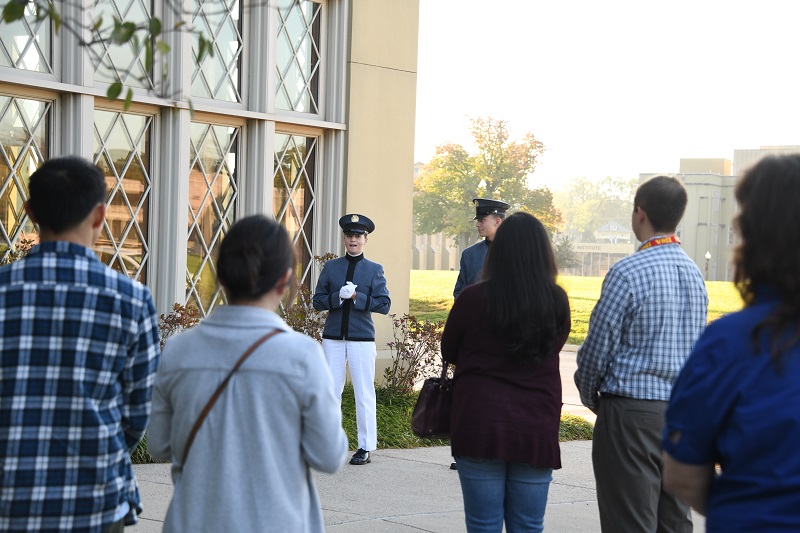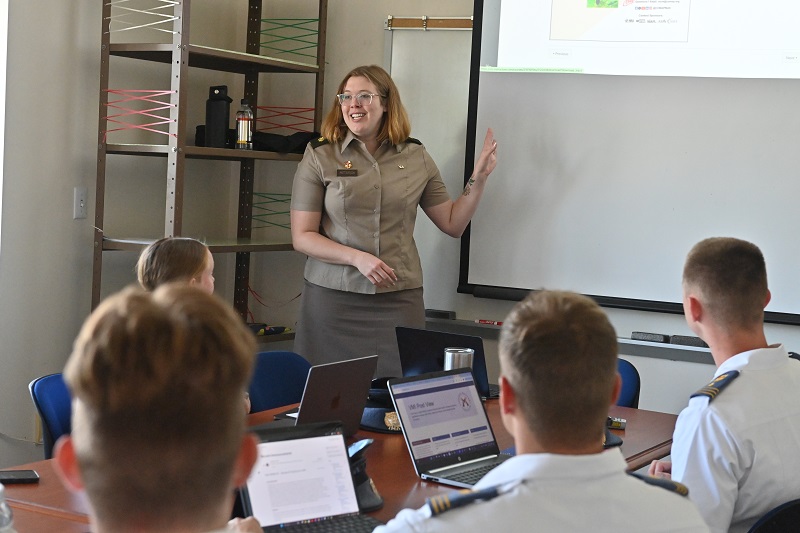Forging 21st Century Leaders: Strategic Plan 2024-2034
Forging 21st Century Leaders
Recruit Top Cadets and Boost Success Initiative No. 4
GOAL: Recruit and retain talented cadets who embody VMI’s core values of honor, courage, and excellence.
The competition for top high school graduates is fierce.
We need to find those future cadets who exemplify courageous ambition. We must strive to ensure our valued method of education remains affordable and relevant. To do so, cadet recruitment and retention efforts need to be coordinated, intentional, and cutting edge.
—Dr. Mac Bowman ’73,“VMI gave me friends and brothers—cast by special circumstances of struggle and triumph, by victories and defeats, by hearty laughter and tears, which relieve and release, are joined not by mere genes but by bonds, fired in the Institute’s great forge.”
award-winning cardiologist
Objectives: Guiding the path forward
1
Adopt and integrate a strategic enrollment management model that integrates admissions, financial aid, marketing, and cadet support into one unit.
Our enrollment operations will be improved by organizing into a strategic enrollment management framework. Our goal is to create a framework that serves as an interconnected set of functions supporting both recruitment and retention. First, we will hire staff and leadership committed to this effort. Second, we will organize these functions (admissions, financial aid, marketing, and support) into an integrated set of units. Third, we will prioritize innovative recruitment of potential cadets and cadet-athletes (who traditionally constitute more than one-third of the incoming class). Finally, we must leverage data analytics and technology in new ways to optimize these operations and assess their impact. These four actions will be the first in a series of steps to update our approach and regain a competitive advantage in these areas.


2
Be among the top five Virginia public institutions in retention and graduation rates.
VMI is physically and mentally demanding in ways that most institutions are not. Nonetheless, VMI has very respectable retention and graduation rates. Our most recent six-year graduation rate is 77%, which is 15-points above the national average (NSC, 2016 cohort). Among Virginia four-year public institutions, VMI’s graduation rate is five points higher than the average. However, our most recent retention rate was 82%, which is 9th place among Virginia public colleges and universities, 15-points below the front-runner. To become a top five Virginia school, we must improve our retention rate without decreasing academic and physical rigor. There are four strategies that will help us meet this challenge. First, we must adopt a data-and technology-intensive approach to academic advising and support. Second, we must augment advising and support by rethinking our approach to classroom engagement, especially in core curriculum courses. Third, we must address growing high school deficiencies in core knowledge areas—such as mathematics, writing, and history—before cadets matriculate because failing a core curriculum class increases the likelihood of attrition. Fourth, we must be exceptional in our fund raising and operational excellence efforts, with particular emphasis on controlling the costs of education. Together, these four efforts will benefit the entire VMI community: cadets, parents/guardians, faculty, staff, and alumni.

3
Provide quality support services to the Corps of Cadets.
We provide an educational experience that tests and improves cadets’ capacity for perseverance and resilience in ways that prepare them to support and defend the nation in times of peril. It is not a sink-or-swim approach, however. Cadets must have access to the best support services available. Ensuring access to top notch support demonstrates our commitment to cadets’ success in each component of the three-legged stool: academics, military, and athletics. We will build out our cadet health and wellness services, with a focus on ways that best support our unique educational experience.

